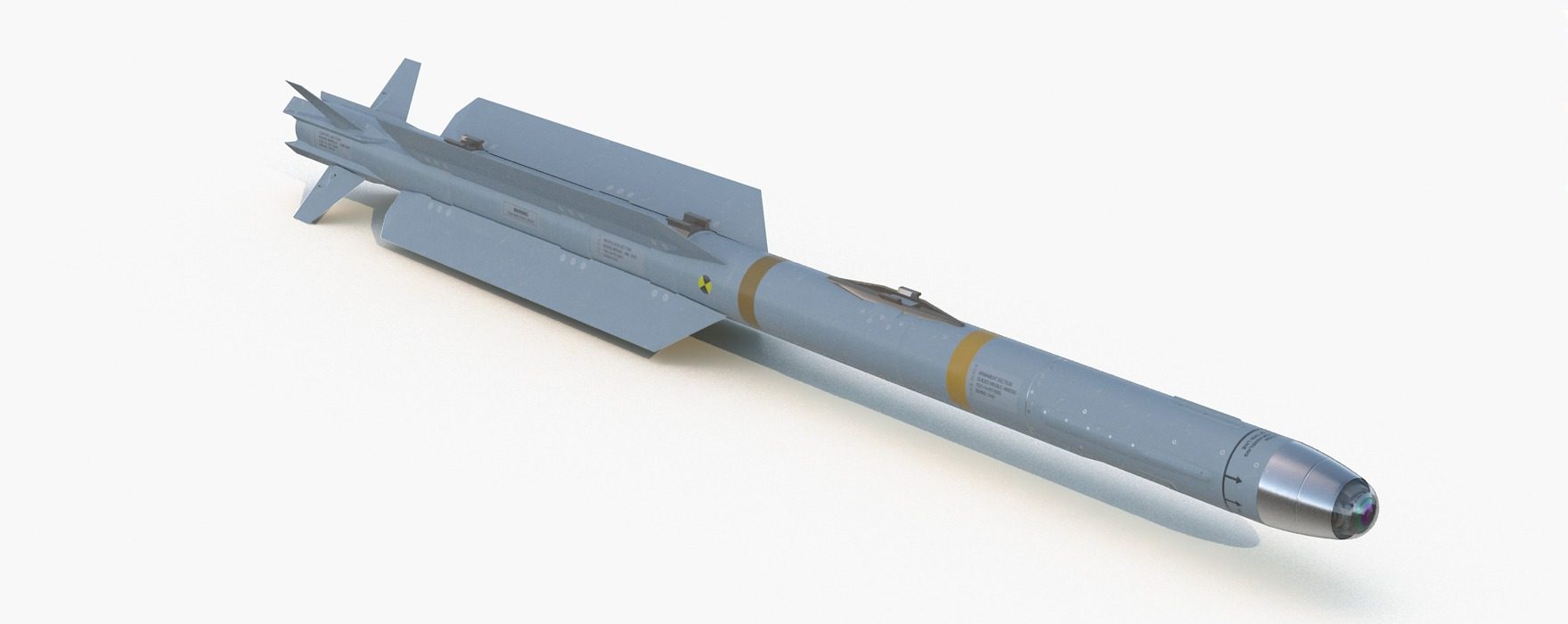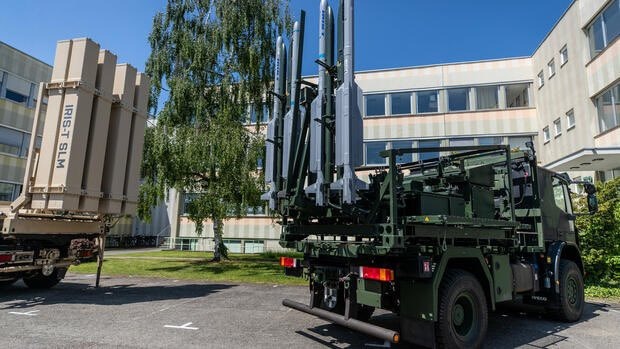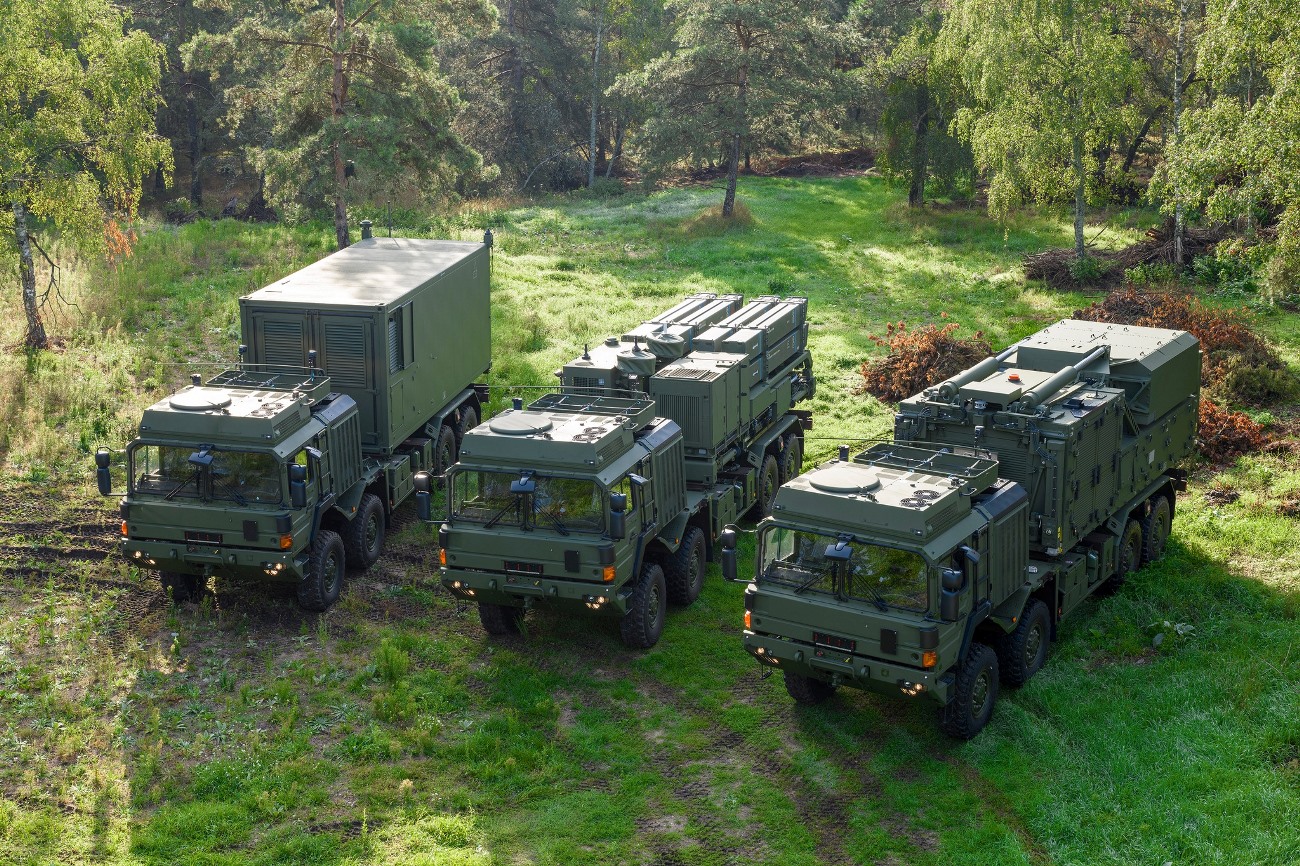The German IRIS-T anti-aircraft system, together with the NASAMS and Patriot systems, became the basis of the Ukrainian ‘shield,’ which protects cities and strategic objects from Russian shellings. This system proved to be an effective and reliable weapon, capable of intercepting all kinds of aerodynamic targets, including the most modern Russian Kh-101 stealth cruise missiles.
The Ukrainian Air Force became the world’s first operator of these SAM, ahead of Egypt, which first ordered them, and Germany. So what kind of system is this, and how did it show up on the battlefield?
Where Did It All Start
This anti-aircraft system dates back to 1996, when Germany and several other European countries began to look for a replacement for outdated American AIM-9L Sidewinder missiles. So in 1997, the development of a new IRIS-T air-to-air missile began.
The new missile was supposed to solve the problems of the Sidewinder, which could not effectively counteract highly maneuverable targets in close combat due to the small target acquisition angle, as well as in conditions of widespread use of flares.
The name IRIS-T became a short acronym for the full designation InfraRed Imaging System Tail/thrust vector-controlled. These words capture the essence of the missile’s concept.

To increase maneuverability, the missile received a new rocket motor with thrust vectoring, and a fuselage that could withstand over-Gs up to 100G.
The updated seeker incorporated a thermal imaging matrix with a resolution of 128×128 pixels, enabling it to differentiate between locked-on targets and flares. To facilitate target identification, the guidance system integrated a library comprising typical silhouettes of all recognized combat aircraft from various perspectives. Within this library, eight of the most susceptible points for missile impact were retained for each target.
The seeker also received an increased angle of view to 90 degrees, which reduced the possibility of losing the target during active maneuvering.
As per the developers, owing to the exceptional maneuverability of the missile and the advanced seeker, the projectile could execute a 180° turn ‘within the space of two football fields.’
Structurally, the missile can be divided into four sections: a guidance system in the nose, a warhead, a rocket engine, and a thrust vector control system located in the rear.
The length of the rocket is 2900 mm with a diameter of 127 mm, and the weight is 88 kilograms. The fuselage and rocket motor are made of ultra-light composite materials to reduce weight.
The missile’s warhead is HE-fragmentary, featuring preformed fragments, with a total mass of 11.4 kilograms. Initiation can occur either through a contact fuze in the event of a direct hit or by a radar proximity fuze in close proximity to the target.

The German company Diehl Defence was the main contractor for the project and took over the development of the thermal imaging seeker and the missile guidance module. At the same time, the Swedish Saab became the developer of the data processing module, the Italian FiatAvio developed a rocket motor, and the Greek Pyrkal provided a warhead.
Success in the Air and on the Ground
Following the successful completion of the development of the air-to-air missile and its adoption by several countries, the development of a ground system commenced. This system was designed to use the IRIS-T missile in support of air defense objectives.
In particular, the project under the designation IRIS-T SL (Surface Launcher) provided for the creation of a surface-to-air missile system based on this missile. At the same time, two modifications were created simultaneously – short (SLS) and medium (SLM) ranges with unified missiles.
As of April 2022, the third version of the IRIS-T SLX long-range missile is also in development. It should get twin thermal imaging and radar seeker and will be able to intercept targets at a range of up to 80 km and an altitude of 30 km.
IRIS-T SLS
Like most other anti-aircraft systems, the IRIS-T SLS short-range system was built around a ready-made anti-aircraft missile. The combined flight control system of the IRIS-T air-to-air missile, which uses a satellite navigation system, an inertial system, and a two-way communication channel in addition to an IR seeker, made it possible to use it for ground launch without any modifications.
The ground launcher is equipped with a radar (in the case of the Swedish version — the Giraffe radar), scanning airspace, and tracking targets.
In case of target detection and receiving a command to fire, the missile is launched from the vertical launch system, and flies the entire initial stage of the route under the control of the inertial system and adjustment from the ground system. On approach to the target, the missile activates the seeker, which drives the missile to the target.
The range of ground-launch missiles falls from 25 to 10 kilometers, and the maximum altitude is 8 km.
Sweden uses a self-propelled system on the chassis of a BvS10 amphibious armoured vehicle with four rails for missiles, but it is possible to integrate it onto the wheeled chassis.

IRIS-T SLM
The decision to develop an extended-range IRIS-T missile was made by the German Federal Defense Technology Office in May 2007. It was planned that the new missile would complement the American Patriot systems and take over the interception of aircraft, helicopters, and guided missiles.
Under the terms of the contract, Diehl Defence undertook the development of the IRIS-T SL missile. In comparison to the original air-to-air missile, the new interceptor was extended in length and ‘increased in weight,’ reaching a diameter of 152 mm due to the integration of the new solid fuel motor. This enhancement enabled the missile to achieve speeds of up to 3 Mach (3675 km/h).
Due to the new motor and software, the missile received an increased range of up to 40 kilometers with an altitude of 20 thousand meters.
The missile, weighing about 240 kg, is equipped with a hemispherical head part covered with an aerodynamic fairing, which is dropped before lock-on the target. The interceptor is supplied in a sealed transport-launch container.

For the new missile, the designers of Diehl Defence developed a completely new IRIS-T SLM mobile anti-aircraft missile system, which was introduced in 2014.
The standard SAM combat unit includes a command post, a multifunctional target detection and tracking radar (TRML-4D, CEAFAR, Ground Master 200, or other), as well as three self-propelled launchers.
Each TEL carries eight transport and launch containers with missiles. Interceptors are launched when the containers are deployed to a vertical position. In addition to the launcher, the combat vehicle carries radio equipment for communication with other components of the air defense system and the missile in flight.
Despite its high mobility, the system can only operate from a stationary position after the necessary preparations. It can operate autonomously, or as part of a multi-layer air defense with data exchange with other systems.
TRML-4D Radar
The anti-aircraft system has a modular structure, so it can use most of the modern western radars. However, for Egypt and Ukraine, anti-aircraft systems are equipped with TRML-4D radar produced by the German company Hensoldt.
Developed in 2018, the TRML-4D radar is the latest version of the C-band TRML family of mid-range radars.
The mobile radar is equipped with a rotary active electronically scanned array (AESA) antenna with solid-state GaN elements. It combines digital beamforming with pulse-Doppler radar to detect stealthy aerial targets, such as hovering helicopters or low-flying cruise missiles under difficult conditions and high target density.
The instrumental target detection range declared by the developer reaches 250 km at an altitude of up to 40 km. However, real detection parameters are more modest and depend on the type of target and observation conditions. The representatives of Hensoldt voiced practical parameters of the detection distance: for fighters – up to 120 km, for supersonic missiles – up to 60 km.
Separately, it should be noted that the manufacturer announced the possibility of detecting ballistic targets, which, according to some data, was confirmed in practice in Ukraine, in one of its commercials.
The developer highlights the ability of TRML-4D to create target tracks in the minimum amount of time and the ultra-high reliability of its components when working continuously around the clock.

Financial Dimension of the Issue
Globally, any modern war is essentially a battle of economies. Therefore, in the development of weapons, an important parameter to consider is their cost. This concern is equally relevant to air defense, which, despite its complexity, should be designed to be cost-effective.
The cost of the IRIS-T SLM system was not made public, but according to different sources estimations [1, 2], it can range from €100-140 million per full unit.
Hensoldt’s TRML-4D radar, which comes complete with each unit, costs about €16.5 million ($18 million). Its cost can be deducted from last year’s May contract for six radars worth €100 million. It should be noted that although the system is able to work in its basic configuration, to increase its efficiency and viewing angles, it can be given additional radars.
While the initial cost of the system may appear to be a primary consideration, in the long term, the price of the anti-aircraft missiles deployed by the system holds greater significance.
The basic air-to-air missile used with the IRIS-T SLS short-range system, depending on the scope of the contract, can cost from €700 to €900 thousand. This range was derived from the 2003 Italian contract and the recent budget committee document of the German Bundestag.
At the same time, the cost of an IRIS-T SL long-range and ground-launched missile remains unknown. The missile received a new rocket motor, which already indicates an increase in price, but it retained most of the original units, including the guidance system.
IRIS-T Faces Its Baptism of Fire
Ukraine became the world’s first operator of the IRIS-T SLM anti-aircraft system. The first system took up combat duty in Ukraine in October 2022 and managed to intercept more than 60 enemy air targets in the first six months.
“Already during the first baptism of fire in October 2022, when the enemy massively attacked objects of critical infrastructure in Ukraine, the SAM shot down 100 percent of the targets,” said the anti-aircraft operator with the call sign ‘Kum’.
The validity of this thesis was further affirmed by Mykola Oleshchuk, Commander of the Air Force of the Armed Forces of Ukraine, during his interview with Ukrainian journalist Dmytro Komarov:
“Of the 51 missiles fired by the German IRIS-T anti-aircraft system, all 51 reached the target,” Oleschuk said.
Another member of the crew, the deputy commander of the anti-aircraft missile unit with the call sign ‘Jeweler,’ also stressed the high technology of the system.
“It is accurate and reliable, quite automated, and destroys all aerodynamic targets that are approaching our area of responsibility. In addition, we can share the information we see on our radars with colleagues. Those in turn destroy targets according to our data,” he explained.
According to Denys Smazhny, Chief Specialist of the Anti-Aircraft Missile Forces Training Department, IRIS-T SLM copes with all the air targets that it was necessary to meet. He notes that the main advantage of the system is its sensitive TRML-4D radar.
“Those cruise missiles that fly very low and are built using stealth technology, such as Kh-101, our radars do not see them well. But IRIS-T does,” said Smazhny.

He also noted that this anti-aircraft system is capable of firing against several dozen targets at once.
“If we have three launchers that are part of the unit, that is, a total of 24 missiles, then this means that it can simultaneously destroy 24 targets. That is, if many missiles are involved in a missile strike, then in the case of IRIS-T, most missiles, if the system spots them, will be destroyed,” Denys says.
Smazhny also added that although the declared maximum range of the IRIS-T SL anti-aircraft missile is 40 km, in fact the system itself can cover a large area, placing launchers at a distance of up to 20 km from the radar and command post.
“So missiles can destroy targets up to 60 km from a covered facility,” he explained.
Deployment of network of IRIS-T systems in Ukraine
According to information on the military assistance to Ukraine posted on the German government website, as of January 2024, three IRIS-T SLM anti-aircraft systems, six additional TRML-4D radars for detecting air targets, and two IRIS-T SLS launchers were transferred. The latter are supplied on the wheel chassis of the Unimog U 5000 truck.

Plans for transfer include: five IRIS-T SLM systems, 22 IRIS-T SLS launchers, and two TRML-4D radars.
It should be noted that although the IRIS-T SLS can work autonomously, it is possible that they will be used in cooperation with the “big brother” for three additional SLS per system.
In addition, it is worth noting that Germany and a number of other countries, in particular Sweden and Norway, supply air-to-air and ground-to-air anti-aircraft missiles to the SLS and SLM versions.
SUPPORT MILITARNYI
Even a single donation or a $1 subscription will help us contnue working and developing. Fund independent military media and have access to credible information.


 Роман Приходько
Роман Приходько 
 Віктор Шолудько
Віктор Шолудько 
 Андрій Харук
Андрій Харук 

 Андрій Тарасенко
Андрій Тарасенко 
 Yann
Yann 
 СПЖ "Водограй"
СПЖ "Водограй" 

 ГО "Військова школа "Боривітер"
ГО "Військова школа "Боривітер" 

 Катерина Шимкевич
Катерина Шимкевич 
 Олександр Солонько
Олександр Солонько 
 Андрій Риженко
Андрій Риженко 


